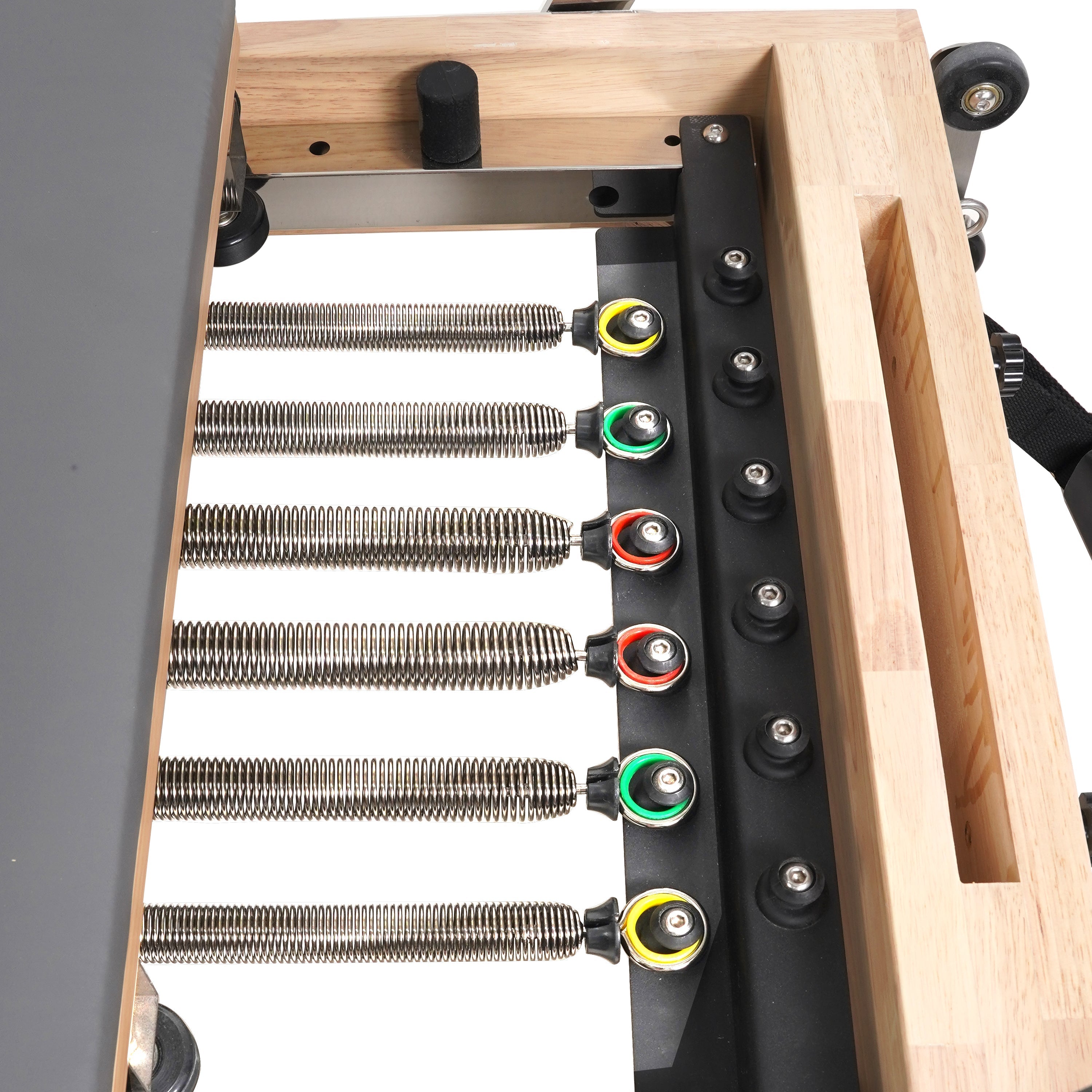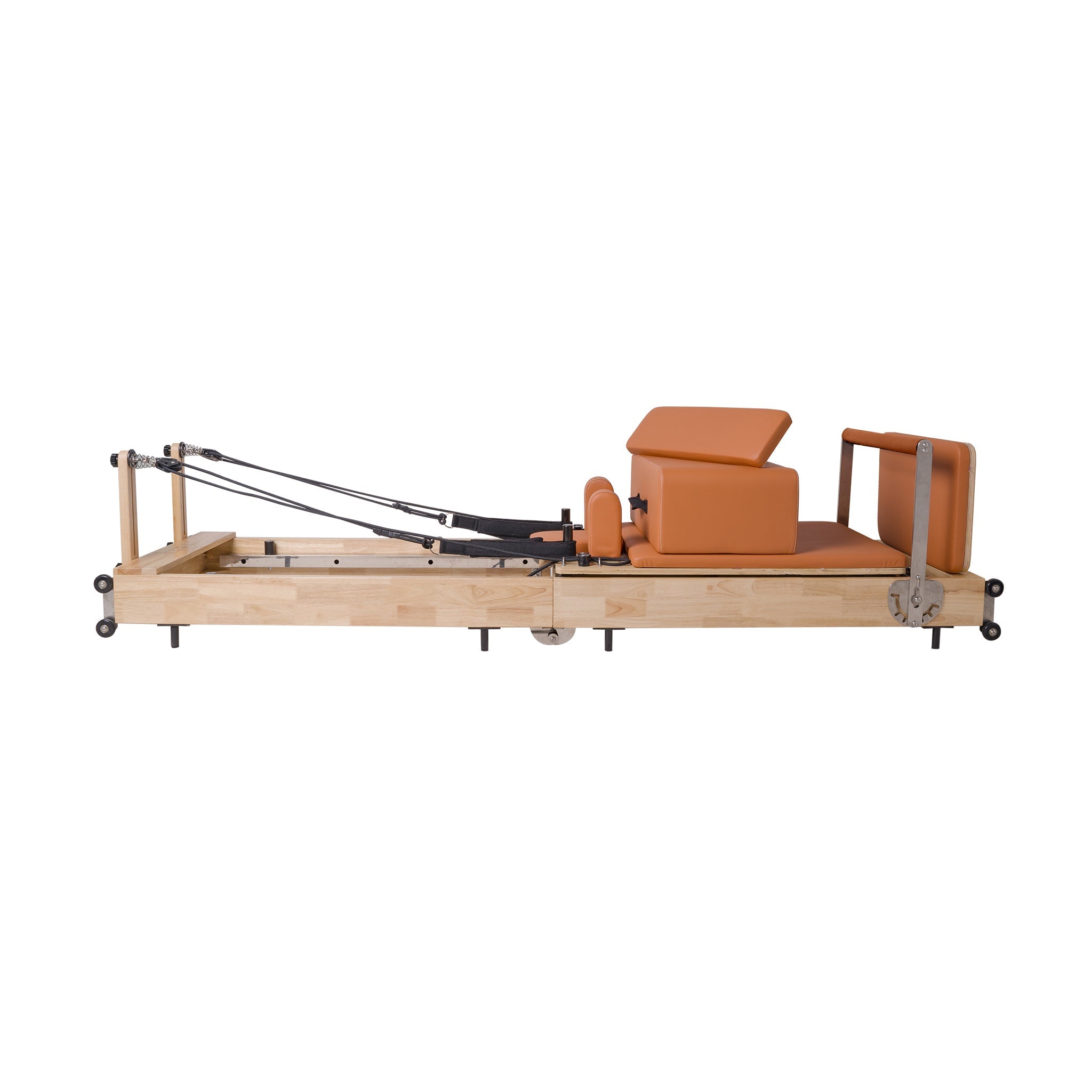When choosing a Pilates reformer, the decision often comes down to space, convenience, and performance. If you're wondering whether a foldable Pilates reformer or a traditional one better suits your needs, the answer depends on your lifestyle, available space, budget, and fitness goals. This guide breaks down the key differences to help you make the right choice.
What is a Pilates Reformer?
A Pilates reformer is a piece of equipment designed to enhance Pilates workouts by adding resistance through springs, a moving carriage, and adjustable straps. It allows for a wide range of exercises that promote strength, flexibility, alignment, and balance. Reformers are used in studios, gyms, and increasingly at home.
What is a Foldable Pilates Reformer?
A foldable Pilates reformer is a more compact, portable version of the traditional machine. It can be folded for easier storage, making it popular among home users or instructors who need to transport the equipment. Despite its flexibility, many foldable reformers maintain core functionalities like adjustable resistance, footbars, and shoulder rests.
Key Differences Between Foldable and Traditional Reformers
1. Space and Storage
- Foldable Reformer: Designed for small spaces. Ideal for users who need to store it under a bed, in a closet, or against a wall. It’s perfect for apartment dwellers or anyone with limited space.
- Traditional Reformer: Larger and typically not designed to fold. Best suited for a dedicated workout space like a home gym or studio.
✅ Choose foldable if you need portability and storage flexibility.
2. Stability and Durability
- Foldable Reformer: Lightweight frames and folding mechanisms can sometimes result in slightly reduced stability, especially during high-intensity or advanced movements.
- Traditional Reformer: Built with heavier, more robust frames (often wood or heavy-duty aluminum), offering superior stability, especially in professional settings.
✅ Choose traditional if you prioritize long-term durability and studio-grade performance.
3. Portability
- Foldable Reformer: Easy to move, set up, and transport. Some models even include wheels for extra mobility.
- Traditional Reformer: Typically stationary. Not meant for regular transport.
✅ Choose foldable if you’re a mobile instructor or need to move it between rooms.
4. Functionality and Features
- Foldable Reformer: Many models offer solid functionality for beginner to intermediate users. However, they may have fewer customization options or limited resistance ranges compared to studio machines.
- Traditional Reformer: Offers more advanced features—more springs, footbar positions, and sometimes integrated towers or jumpboards.
✅ Choose traditional if you're an advanced practitioner or require professional-level features.
5. Price Range
- Foldable Reformer: Generally more affordable, with models starting from a few hundred dollars.
- Traditional Reformer: Higher price point, often due to quality materials and studio-level design.
✅ Choose foldable if you’re budget-conscious or just starting Pilates.
Pros and Cons Summary
| Feature | Foldable Reformer | Traditional Reformer |
|---|---|---|
| Storage | Easy to store | Needs dedicated space |
| Portability | High | Low |
| Stability | Moderate | High |
| Features | Basic–Moderate | Advanced |
| Cost | Lower | Higher |
Who Should Choose a Foldable Pilates Reformer?
You should consider a foldable model if:
- You live in a small space or share your home.
- You’re a beginner or casual user.
- You need to travel with your equipment.
- You want a budget-friendly option.
Who Should Choose a Traditional Pilates Reformer?
You should opt for a traditional model if:
- You have a dedicated workout area.
- You’re an advanced practitioner or instructor.
- You need professional-grade durability and features.
- You plan to use it intensively or with clients.
Final Thoughts: Which One Is Right for You?
Both foldable and traditional Pilates reformers have clear strengths. The foldable version excels in flexibility, storage, and affordability—ideal for home users and beginners. Meanwhile, the traditional reformer provides a studio-quality experience for those serious about Pilates practice or working in professional environments.
Before you decide, consider how often you’ll use the reformer, where it will be stored, and whether your Pilates goals lean toward casual fitness or deep, long-term practice. Choosing the right reformer will ensure you get the most out of your investment—and your Pilates journey.



एक टिप्पणी द्या
प्रकाशित होण्यापूर्वी सर्व टिप्पण्या नियंत्रित केल्या जातात.
Diese Website ist durch hCaptcha geschützt und es gelten die allgemeinen Geschäftsbedingungen und Datenschutzbestimmungen von hCaptcha.